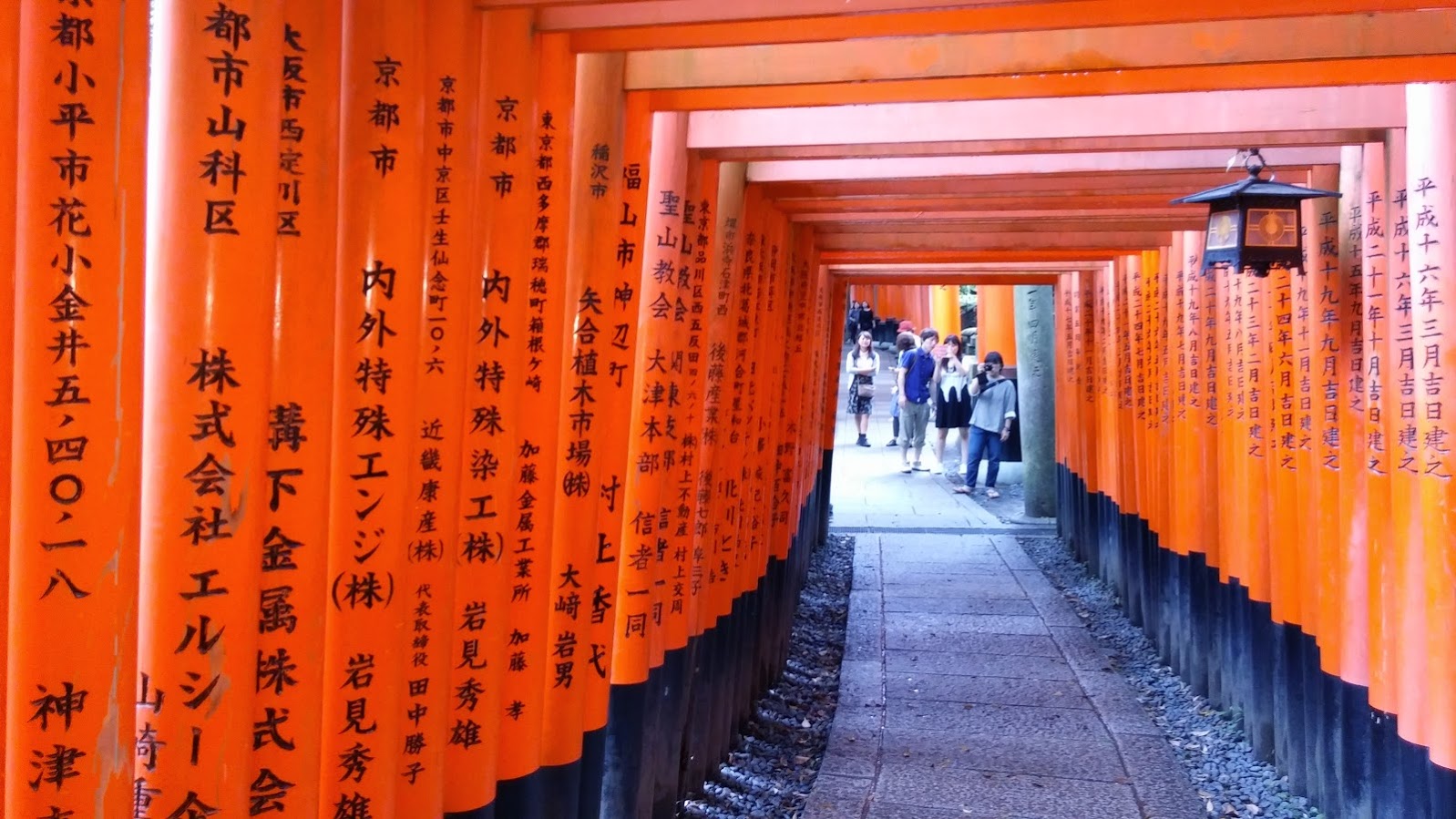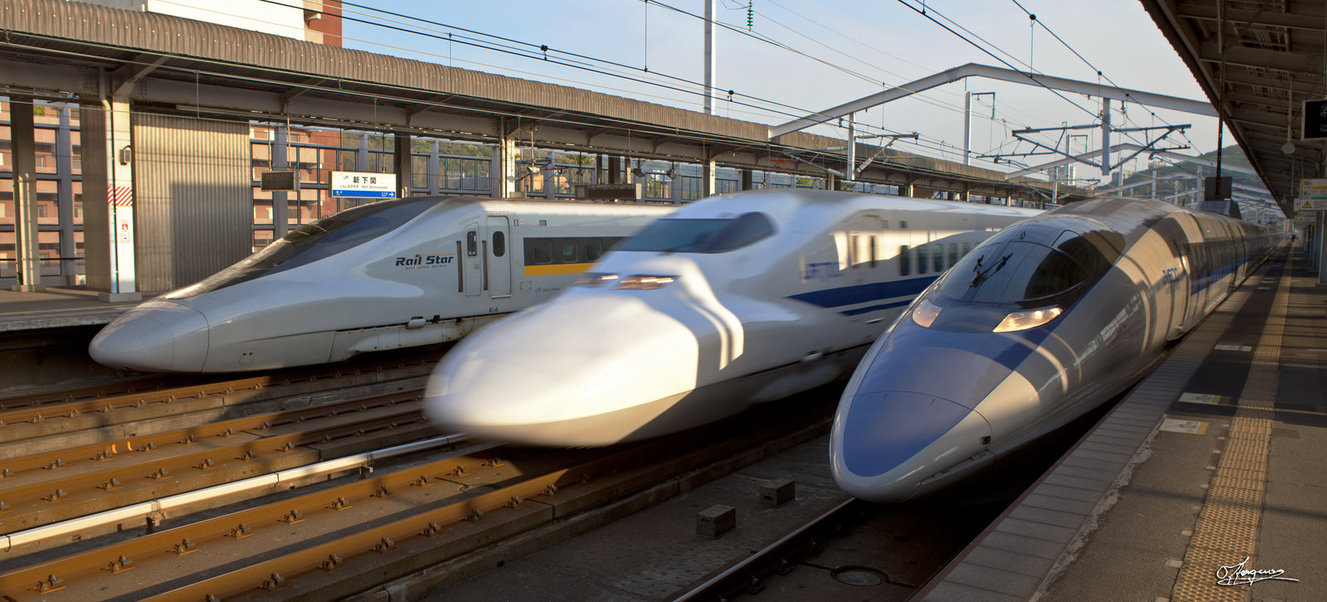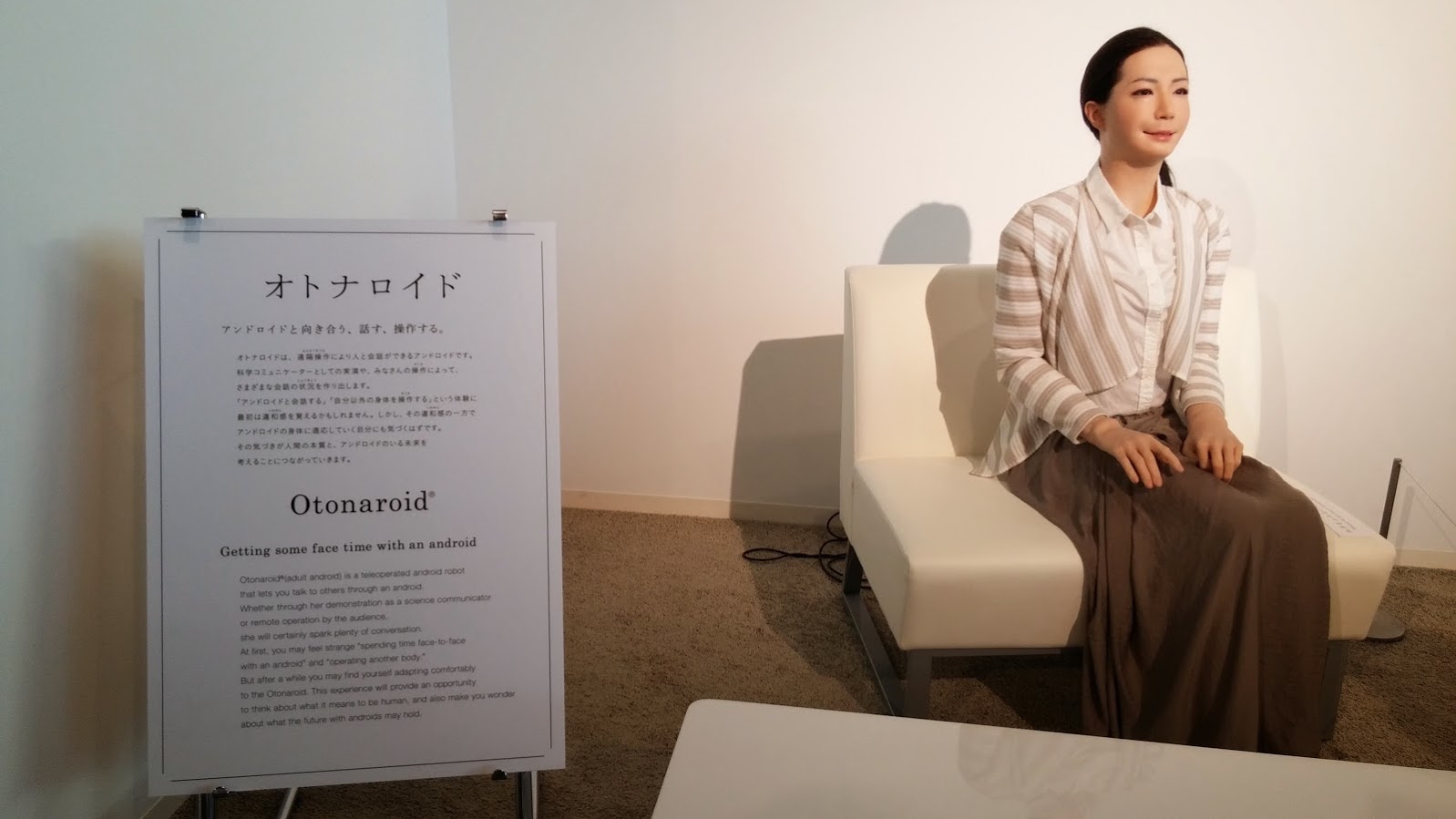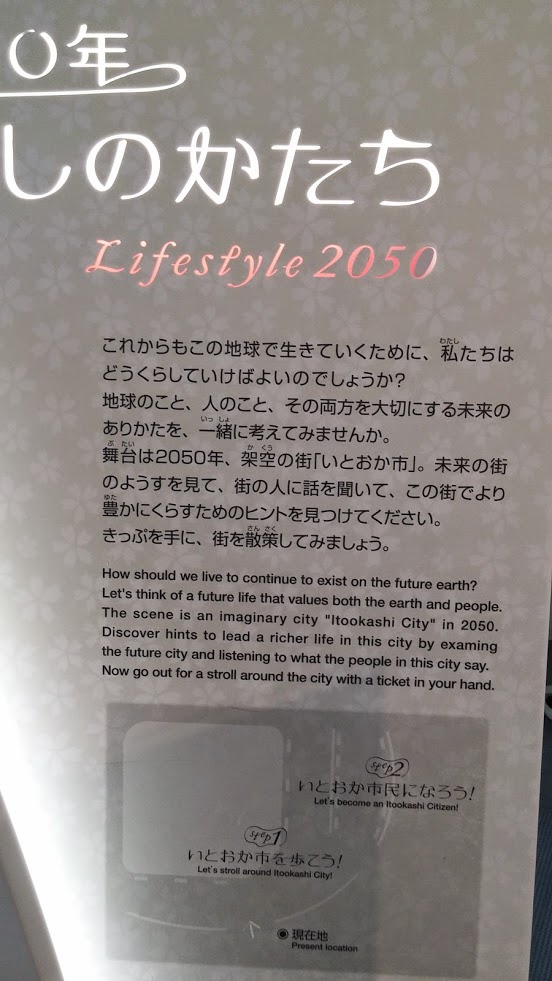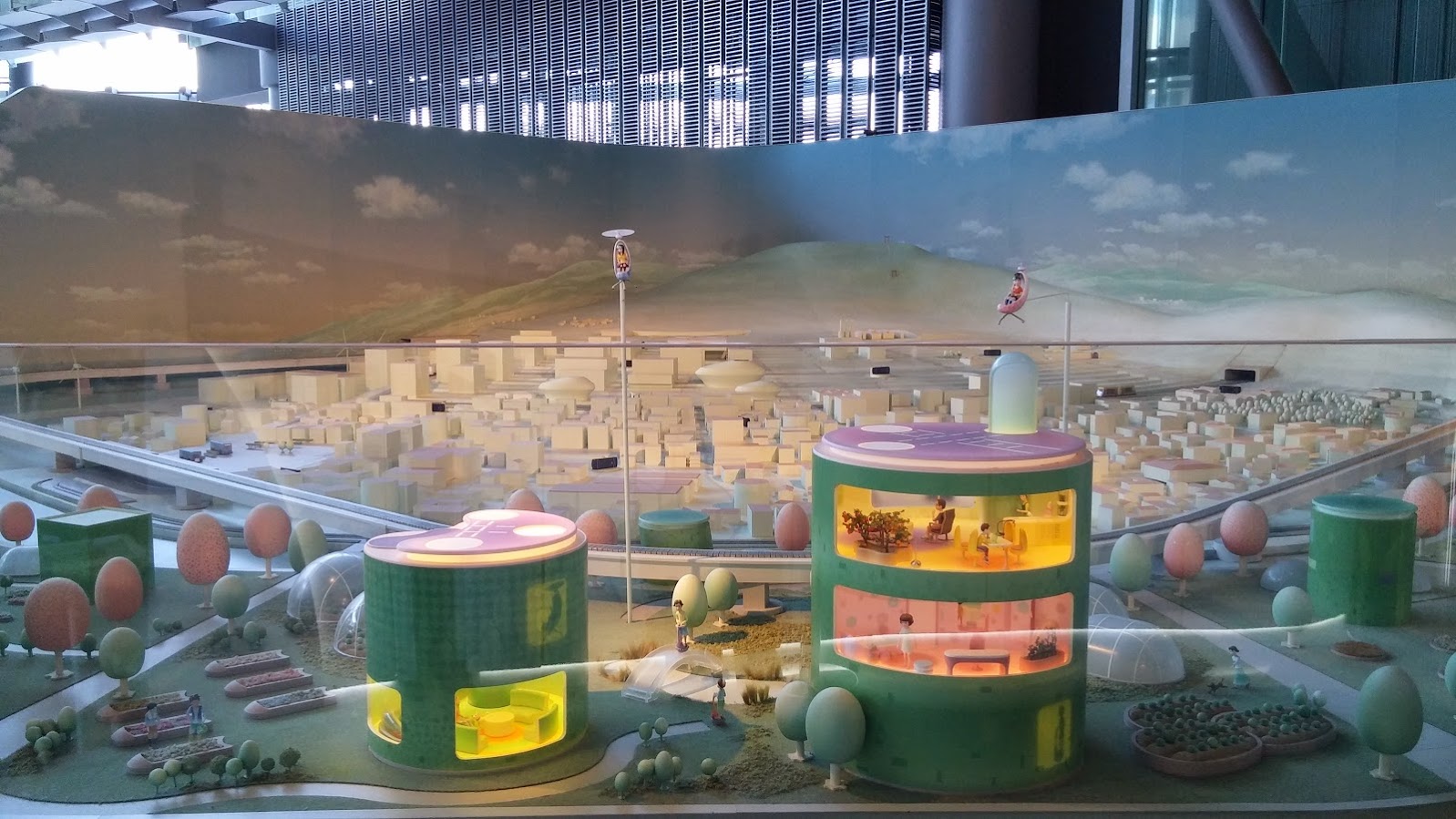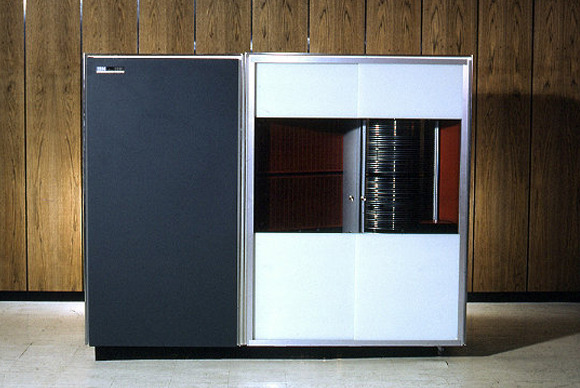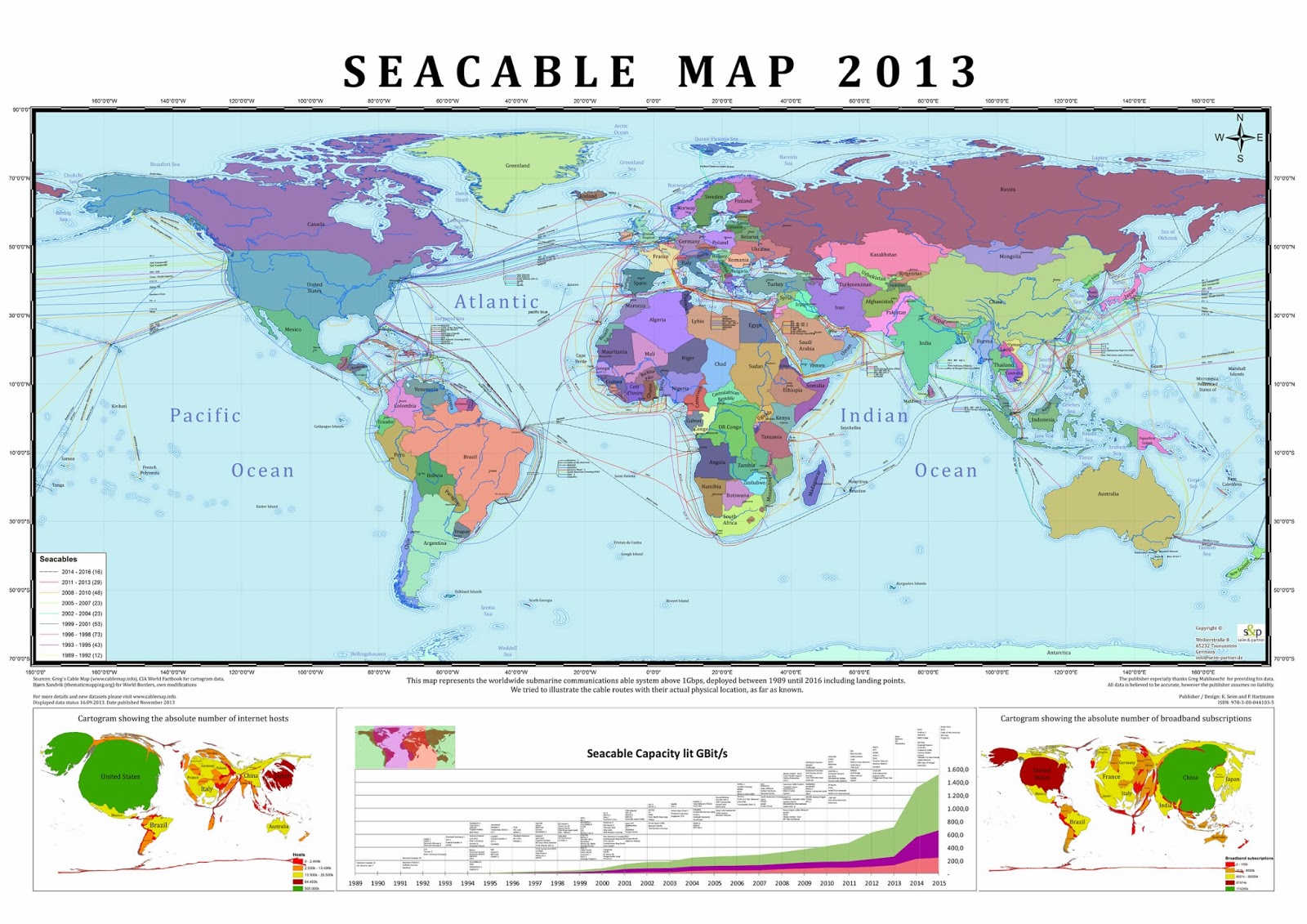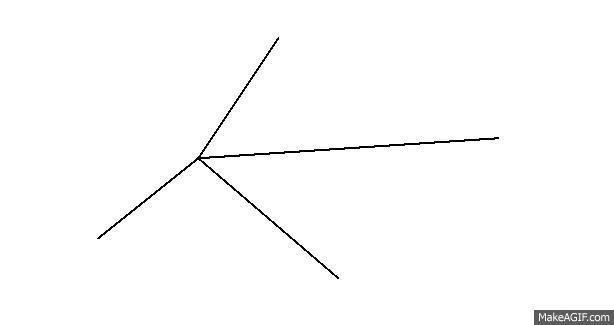

Counterintuitive Math
There are several mathematical statements or problems that do not make sense at all at first glance, until closely scrutinized. A detailed examination then proves that the statements are true and shows that they are completely counterintuitive. Here are some of my favorite examples.
The Monty Hall problem
The Monty Hall problem is a puzzle where the underlying mathematical explanation is based on probability theory. A short statement of the problem reads:
There are three doors: A, B and C. There is a car behind one of them and goats behind the other two. You are given a chance to pick a door and win what is behind. You will pick one of the doors (say A) and then from the other two doors (B and C) the one which has a goat behind is revealed to you (say B). Now, you are told that you are free to switch your choice to the other remaining door i.e. C. Will you have a better chance of winning the car if you switch your choice from A to C or if you stay with your choice of A?
A quick and intuitive decision seems that it doesn’t make a difference if you stay with door A or switch to door C; your chance appears 50/50. But it is not! You always have a better chance of winning the car if you switch your choice. Here is a mathematical explanation:
Your initial chance of winning the car is 1/3. After a door which has a goat behind is revealed, if you stay with your choice, your chance of winning is still 1/3. But the other door suddenly holds the remaining 2/3 odds. So, switching gives you a 2/3 chance of winning. That still doesn’t seem to make sense, right? A detailed evaluation helps. There are three possible locations of the car.
- A – car, B – goat, C – goat: You choose A. B is revealed to you. If you stay with A, you win. If you switch, you lose.
- A – goat, B – car, C – goat: You choose A. C is revealed to you. If you stay with A, you lose. If you switch, you win.
- A – goat, B – goat, C – car: You choose A. B is revealed to you. If you stay with A, you lose. If you switch, you win.
So, switching wins you the car 2/3 of the time! The concept works for any number of choices other than 3. Have a look at this video for more explanation.
The sum of all natural numbers
Natural numbers are ordinary numbers that we use for counting i.e. $latex 1,2,3…$. So, what is the sum of all natural numbers? An intuitive answer is positive infinity. The series is actually divergent and a trick used as a finite sum result is:
$latex 1+2+3+…=~-\frac{1}{12}$
What?! That’s impossible! Did you say that? Here is a mathematical proof by Srinivasa Ramanujan. Let’s call the sum $latex s$,
$latex s = 1 + 2 + 3 + 4 + 5 + 6 + …$,
multiply it by $latex 4$,
$latex 4s = 4 + 8 + 12 + …$,
and then take the difference between the two (we subtract even numbers from even numbers and keep the odd ones) to get
$latex -3s = 1 – 2 + 3 – 4 + 5 – 6 + …$
But $latex 1 – 2 + 3 – 4 + 5 – 6 + …$ is a well-known alternating series which converges to $latex 1/4$. Thus, we have:
$latex -3s = \frac{1}{4} \Rightarrow s = -\frac{1}{12}$
Things get a bit spooky when infinities are involved. This sum has, surprisingly, found an application in theoretical physics, particularly in string theory.
Benford’s law
If you are given a set of numerical data about some naturally occurring item or event (e.g. depths of lakes), how many of the numbers would you guess have 1 as a first digit? How many with 2? There are 9 possibilities. It appears that all numbers from 1 to 9 have the same chance of being the first digit. That’s not usually the case, though. Frank Benford has worked out a distribution that is almost always true for numbers in nature or related to nature. He stated that the number ‘1’ appears as the first digit about 30% of the time, ‘2’ about 17% of the time and decreasing for the next digits, with ‘9’ having the least chance of about 5%. This law is actually used to detect fraud in financial markets. Checkout this video.


The Law of Conservation of Problems
In physics, there are conservation laws for quantities like mass and energy. When we say a certain quantity obeys a conservation law, we mean that the amount of that quantity in a given space and time (a given system if you will) remains constant. So, what is the law of conservation of problems? Well, it is more of a fun way of looking at the problems we deal with in day-to-day life, or in general, problems that humanity deals with on a global scale. The obvious implication of the analogy is that the amount of problems we deal with remains the same despite the sociological, scientific and technological progresses we make. There is of course no way of measuring problems as a quantity and we cannot be certain about this statement. We can, however, make a qualitative assessment of what is implied by this playful law.
Take a look at scientific discoveries and technological innovations for example. For centuries, we have developed innovation after innovation and made discovery after discovery to make our lives simpler and better. But an invention intended to make some aspects of life simpler usually results in other unforeseen problems. There are several examples for this. The invention of the automobile made our lives easier by being a convenient means of transportation but the increase in the number of cars worldwide meant that we had to deal with the noise, pollution and congestion problems that it comes with. When we try to make mass production of goods more efficient by mechanizing factories, we create problems like unemployment. When we create the internet to make knowledge universally available, buy/sell from the comfort of our couches and digitally identify everyone, we come up with challenges like cybersecurity and identity theft. When we use the internet to create social networks to stay connected, we end up with superficial relationships and become more isolated. Sociological progresses are no different. The continued urbanization of the cities we live in means that we lead more and more reclusive lives, the threats of which to personal well being we can easily imagine. We can list many more examples but the point is already made: problem is a conserved quantity, sort of. 🙂
So many examples to make it appear all doom and gloom! There is a silver lining to all this, though. There is good progress and there is bad progress. In a bigger perspective of things, we could say we have made a good progress if we have indeed improved several aspects of our daily lives through scientific discoveries, even if we end up with some problems we have to deal with. In a good progress, the benefits of our inventions and discoveries outweigh the problems we create. On the other hand, and obviously, it is a bad progress if the problems we create supersede the benefits we get. You might find a documentary entitled Surviving Progress interesting, the trailer of which is below.
Whatever we do, problems of all kind, old or new, will always be there. Regardless of what we become due to our societal upbringing, we are curious beings by nature and we always look for problems to solve and fix things that are not broken. It is almost as if we need problems to keep going forward; we will be bored otherwise. 🙂
Header image credit: https://www.youtube.com/watch?v=esZAzT2dEFk
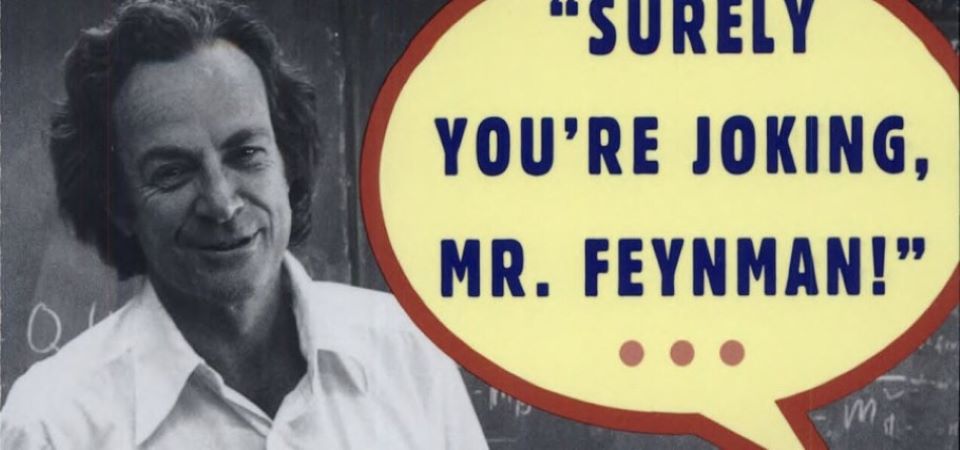

The Pleasure of Reading Richard Feynman’s Life
I recently finished reading the autobiography of one of the greatest scientists of the 20th century, Richard Feynman, entitled Surely You’re Joking, Mr. Feynman. My feeling from beginning to end was ‘why was I so late to read it?’ It was undoubtedly one of the best books I have read. It was fascinating to look closer into the scientific and personal journey of this Nobel Prize winning physicist. He narrates several amazing stories. Even though he was a theoretical physicist, he developed many other interests like in art (drawing/painting), biology and bongo playing. The way he lived his life made a striking impression on me. You observe from his captivating stories that he lived life the way he saw it – always passionately curious and fun loving. Feynman repeatedly mentions the influence of his father on the way he lived his life and what he became later. It was a great read. I encourage anyone to read the book. I share here some excerpts that I found especially interesting:
When he was offered a top scientific position by the Institute for Advanced Study, he emphasizes that he does what he does not to fulfill people’s expectations but for the pleasure of it:
“… You have no responsibility to live up to what other people think you ought to accomplish. I have no responsibility to be like what they expect me to be. It’s their mistake, not my failing. …”
While attending a social science conference and reading a paper written by one sociologist:
“… “The individual member of the social community often receives his information via visual, symbolic channels.” I went back and forth over it, and translated. You know what it means? “People read.” …”
He said he would never participate in such conferences. 🙂
Reciting a lecture he gave on science and society:
“… So I have just one wish for you – the good luck to be somewhere where you are free to maintain the kind of integrity I have described, and where you do not feel forced by a need to maintain your position in the organization, or financial support, or so on, to lose your integrity. May you have that freedom. …“
About being drank and participating in hallucination experiments:
“… You see, I get so much fun out of thinking that I don’t want to destroy this pleasant machine that makes life such a big kick. …”
Well, you wouldn’t have much to read if I share everything here. 🙂
Fascinated by his story in the book, I expanded my research online and came across several of his lectures and documentaries about his life. The BBC series entitled Fun to Imagine was particularly interesting, which can be found on YouTube. In this series, Feynman explains various day to day phenomena and materials from a point of view you probably have never heard of. The way he explained fire scientifically, and simply, in this video was incredible:
I am never going to look at fire in the same way I did. You could also see the pleasure he gets from understanding nature and explaining it to people.
The Fantastic Mr. Feynman is a recent documentary about his life. The Pleasure of Finding Things Out is a collection of his interviews which can be found as a book and on YouTube.
Header image credit: https://reasoncenter.org/2019-05-20-surely-youre-joking-mr-feynman/


Mysteries Hidden in π
The ever increasing power of computers has enabled mathematicians to calculate $latex \pi$ to several decimal places. The current record stands at 13.3 trillion digits (as of October 8, 2014) and the computation took 208 days. Look here for a chronological list of the record computations. Then comes the inevitable question: why are so many mathematicians obsessed with this irrational number? What is the need for calculating so many digits of $latex \pi$? Some do it just for fun while others have very good reasons. The reasons could be for varying purposes such as to test an algorithm or to prove one’s own conjecture, or a conjecture made by someone else.
The form of $latex \pi$ that is particularly interesting to many is its binary form. Binary is the fundamental language of computers where everything is represented by a bunch of 0s and 1s. In binary form, the $latex \pi$ we know as
3.1415926535897932384626433832795028841971693993751…
would look something like
11.00100100001111110110101010001000100001011010001100001000110100 1100010011000110011000101000101110000000110111000001110011010001...
Every digital content whether it is music, picture, movie, software, webpage etc. is stored on a computer in binary form. The conjecture here is that we can find anything we can imagine in the binary form of $latex \pi$ since the digits are random and infinite. Let’s rephrase that: you can find anything that has ever existed, exists or will exist if you look far enough in the binary digits of $latex \pi$. A small video that explains this:
[youtube https://www.youtube.com/watch?v=sjVpqiCvD4w&w=560&h=315]
So, how do you find something in there? That is by no means an easy task. It would require a sophisticated algorithm and a powerful computer, to say the least. Another way is to surprise yourself by picking out a bunch of random binary digits and converting them to text, audio or video. Here is one attempt of that: Finding stuff in binary $latex \pi$.
A slightly different approach to exploring this irrational number is a random walk either on its binary form or any other base $latex n$ form. Here is the result from a random walk on the first 100 billion digits of $latex \pi$ represented in base 4 i.e. in the form of 0s, 1s, 2s and 3s: (Click the picture for interactive content).
The result somewhat supports the hypothesis that the digits of $latex \pi$ are random. It seems certain that we will hear several findings in the future. For now, we remain with the idea as a conjecture.
I found my birthday and my phone number somewhere in the digits of $latex \pi$. See if you can find yours here (1 million digits) or here (10 million digits). Go here if you want to find out the exact locations and how many times those numbers appear within the first 200 million digits of $latex \pi$.
Header image credit: https://science.howstuffworks.com/math-concepts/pi.htm
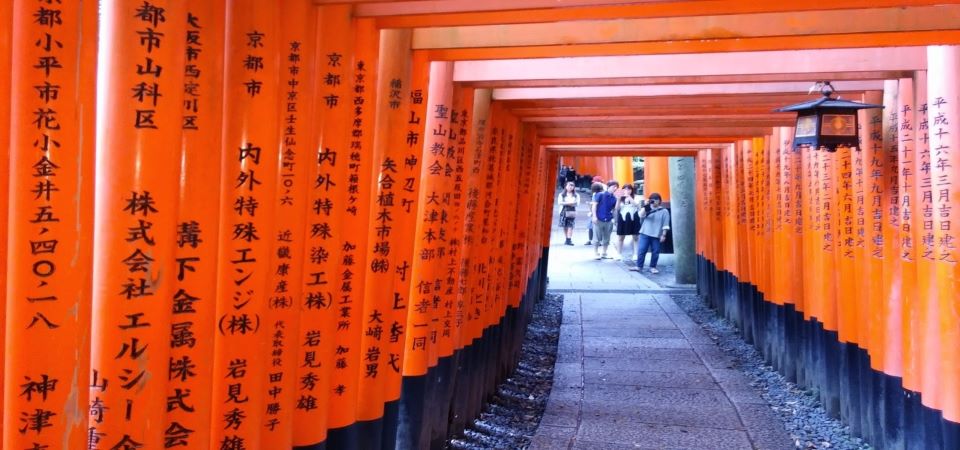

Japan: Impressions from a Trip to the Far East
I always wanted to visit Japan. And no, that is not a cliché – I really wanted to. Growing up, there were many reasons that shaped my impression of Japan. Watching the TV series Oshin as a kid, for example, and observing the people, their houses, and how they did everything created my first image of the country and its culture. I also remember the portrait of a Japanese woman, an advertisement of Fuji Film, which used to hang in our home. I remember reading bits and pieces of Dr. Kebede Michael’s ‘ጃፓን እንደምን ሰለጠነች?’. A number of movies also contributed to what I thought of Japan. With these in mind, when the opportunity to travel there came up, I made sure that I did what was necessary to make it happen. It finally happened and I was lucky to visit two of Japan’s beautiful cities – Kyoto and Tokyo. Here are my impressions of this amazing country.
Incredibly Polite People
I have heard before that Japanese people can be very polite. I got to see that for myself this time. They are indeed incredibly polite. You will see that everywhere. I observed that from the first moment when I traveled by train from Osaka Airport to Kyoto. The people who clean the train before boarding stand in a militarily proper way and wave goodbye when the train departs. When the journey starts, the ticket control guy comes into the car, stands at the car door, bends twice and says welcome to everyone. He then proceeds to checking tickets. He does the same at the car door after finishing. Waiters at restaurants welcome you at the door in a similar way and serve you like you have never experienced before. It’s not only people in business; you will see that any random stranger is polite, if you ask for directions for example – if they speak English, that is. One guy even walked me to where I asked.
Kyoto – City of Temples and Shrines
There are thousands (yes thousands) of temples and shrines in Kyoto. Don’t get the wrong impression though; it still is a modern city. I visited a few of the temples and the two that impressed me the most are the Kinkakuji Temple and the Fushimi Inari Shrine. These places give you a picture of what the country was like many years ago. Most of the temples are built hundreds of years ago and yet the detail you see in the structures is nothing short of perfection. 

Kyoto used to be the capital of Japan for over a millennium, until 1868. The Japanese give a special place to their most beautiful city and it is easy to see why when you visit Kyoto.
Japanese Toilets
They have amazing toilets in Japan. A basic Japanese toilet has a water spray/shower for washing your ass after you finish your business. The toilet seat is always warm. The whole set is connected to a power outlet for these features to work. The toilets at my hotel rooms both in Kyoto and Tokyo were of this type. They also have this type of toilets in almost all public places like malls and train stations. I was amazed by the experience! 🙂
I heard that they also have versions of the toilet which can massage your butt. Now that is one fantastic toilet. Look at this video to see what I am talking about.
[youtube https://www.youtube.com/watch?v=_Xnm1syPnwE&w=560&h=315]
The Shinkansen – Bullet Train
This year, Japan is celebrating the 50th anniversary its high speed train – the Shinkansen. I can imagine that it has gone through a lot of development to get to what it is today. Currently, the Shinkansen can reach speeds of upto 320 km/h. I traveled on this magnificent train from Kyoto to Tokyo, a distance of about 500km, in just over 2 hours. I couldn’t help thinking about the times I used to travel from Addis Ababa to Arba Minch, about the same distance, by bus – it took a minimum of 9 hours with a good bus.
Overall, the railway network in Japan is very extensive. The timing of the trains is impeccable. I even heard that if any person working with the trains in any capacity, as a driver or another post, is late by minutes three times, he/she will have to retire from the job. If a train is late by more than 5 minutes, they give letters to the passengers that they can show to their employers. It is not difficult to imagine that any kind of halt in the railway network would affect the economy in a significant way.
Miraikan Museum of Emerging Science and Innovation, Tokyo
You get a glimpse of the future in this huge museum in Tokyo. I was particularly impressed by the robots section. There are prototypes of human like robots named Androids, Telenoids, Otonaroids etc. You can interact with these human like robots by touching and talking to them.
I was also impressed by the model of what a typical Japanese city may look like in 2050. These people are thinking far ahead already!
In Miraikan, you can see what the future holds in almost all the major disciplines of science and technology such as medical science, space technology, physics, chemistry, earth science etc. This museum is a must-see place for anyone that is fascinated by science and technology.
Delicious Food
Normally, I am not a food enthusiast; I just make sure that my stomach is full. But the dining experience I had in Japan was excellent. Whether it was a traditional Japanese restaurant or a modern western style one, I enjoyed the food everywhere. Most of the restaurants in Japan display the foods on their menu through the window. I don’t know how they make it but the display is not actual food but looks so real. Here is a picture of an Italian restaurant at Kyoto Station with a display of the the various spaghetti dishes.
And a picture of a pastry cafeteria: (again the cakes on display are not real)
I had Sushi a couple of times but I am not going to talk about that here since it is almost an international food these days. The Japanese dish I found interesting is called Shabu-shabu. What makes this dish very interesting is the way it is served. You practically cook it for yourself with everything provided. The tables in restaurants that serve Shabu-shabu are equipped with a stove (it’s Japan 🙂 ). The dish features sliced beef with several types of vegetables, raw egg and spices. When you order Shabu-shabu, you will get a pot of water and the ingerdients. You put the pot on the stove, boil it with seaweed and other spices and then cook your dinner!
It is appropriate to point out here that UNESCO has added Japanese cuisine to its Intangible Cultural Heritage of Humanity list.
Cameras Everywhere
You will see security cameras almost everywhere in Japan: taxis, buses, trains, elevators, train stations – you name it. It kind of makes you feel like you are part of some reality show. It is normal these days to see cameras in public places everywhere else but it felt like another level in Tokyo.
Technology and Culture in Harmony
The Japanese can be a very good example of development. They are technologically very advanced and yet they have kept their culture and it is reflected in most of the things they do.
I will finish this post by sharing my must-see places in Kyoto and Tokyo.
Kyoto: Kinkakuji Temple, Fushimi Inari Shrine, Nijo Castle, Kyoto Imperial Palace
Tokyo: Hachiko Dog Statue at Shibuya, Miraikan Museum, Tokyo Sky Tree, Asakusa, Akihabara Electric Town, Ginza District


Einstein’s Riddle
There is a logic puzzle which is claimed to have been written by Albert Einstein when he was a boy, even though there is no tangible evidence for that. There are different versions of the puzzle with the same idea. Here is one:
The Puzzle
There are 5 houses in 5 different colors in a row. In each house lives a person with a different nationality. The 5 owners drink a certain type of beverage, smoke a certain brand of cigar, and keep a certain pet. No owners have the same pet, smoke the same brand of cigar, or drink the same beverage.
Additional info:
- The Brit lives in the red house.
- The Swede keeps dogs as pets.
- The Dane drinks tea.
- The green house is on the immediate left of the white house.
- The green house’s owner drinks coffee.
- The owner who smokes Pall Mall rears birds.
- The owner of the yellow house smokes Dunhill.
- The owner living in the center house drinks milk.
- The Norwegian lives in the first house.
- The owner who smokes Blends lives next to the one who keeps cats.
- The owner who keeps the horse lives next to the one who smokes Dunhill.
- The owner who smokes Bluemasters drinks beer.
- The German smokes Prince.
- The Norwegian lives next to the blue house.
- The owner who smokes Blends lives next to the one who drinks water.
The question is: WHO OWNS THE FISH?
Try and solve that without cheating. 🙂
Header image credit: http://mentalfloss.com/article/82855/can-you-solve-einsteins-riddle
Benjamin Franklin’s 13 Virtues
After recently reading The Autobiography of Benjamin Franklin, I wanted to share something that made him one of the most notable people that walked on our earth. He came up with his famous 13 virtues in what he called “a bold and arduous project of arriving at moral perfection.” The virtues and their precepts he proposed and followed seem quite ordinary at first glance. His secret to achieving all the virtues he desired was “not to distract his attention by attempting the whole at once, but to fix one of them at a time” and proceed to the next. Here are the 13 virtues and their meanings in his own words:
- Temperance: “Eat not to dullness; drink not to elevation.”
- Order: “Let all your things have their places; let each part of your business have its time.”
- Resolution: “Resolve to perform what you ought; perform without fail what you resolve.”
- Frugality: “Make no expense but to do good to others or yourself; i.e., waste nothing.”
- Moderation: “Avoid extremes; forbear resenting injuries so much as you think they deserve.”
- Industry: “Lose no time; be always employed in something useful; cut off all unnecessary actions.”
- Cleanliness: “Tolerate no uncleanliness in body, clothes, or habitation.”
- Tranquility: “Be not disturbed at trifles, or at accidents common or unavoidable.”
- Silence: “Speak not but what may benefit others or yourself; avoid trifling conversation.”
- Sincerity: “Use no hurtful deceit; think innocently and justly, and, if you speak, speak accordingly.”
- Justice: “Wrong none by doing injuries, or omitting the benefits that are your duty.”
- Chastity: “Rarely use venery but for health or offspring, never to dullness, weakness, or the injury of your own or another’s peace or reputation.”
- Humility: “Imitate Jesus and Socrates.”
And as is with all, take what you will!
Today’s Top Techs We Will Laugh at Tomorrow
They say technology is 25 years ahead of what the public is told or knows. There is some truth to that statement when you closely look at the various researches undertaken by top tech companies or military academies. And, obviously, what we consider a state-of-the-art technology today was definitely under research some years ago. The trend will continue, and probably at a faster pace. Before we know it, most of the technologies we rely on so much today will be obsolete in the near future. So many things are changing at a blistering pace that some technologies even die before making their way to the whole world. HD DVD is a good example here, which was made obsolete by Blu-Ray Disc, before it was adopted in Africa and some other places.
The consequence of such a continuously evolving trend in technology is that it makes us wonder how we managed to live without what we rely so much on today. It is hardly possible for the modern day person to get through the day without a mobile phone or a computer, for example. What happens in addition is that we compare what we use today with the old days and are bemused at how ridiculous the old techs were. The same is guaranteed to happen in the future when we look back at today.
Which technologies of today will we laugh at tomorrow? Before going into that let’s see some of today’s tech marvels that make us cringe at the old days.
The evolution of the hard drive: The 28MB IBM 1301 Disk Storage Unit from 1961 versus the 1TB Kingston Hyper Predator flash drive from 2013 – the difference is more than visible!
The first mobile phone versus what is the norm today! No more words needed here.



Wires, wires everywhere!
Computer networking, telecommunications, power transmission, the internet all in one way or another depend on some painstaking work done using wires. How much work is it to lay all those fiber optic cables in the oceans and seas of the world to connect the globe via the internet? Power transmission appears to be the toughest one to tackle without using cables; it could have been a reality today had it not been for the unfortunate death of Nikola Tesla and his ingenious ideas with him. When some solution to a problem is cumbersome, you get the feeling that there must be a simpler way.
Batteries
Imagine a future conversation with someone who is not born today. You: “We needed to plug-in/recharge/reload our gadgets (phone, computer etc) very frequently, usually everyday.” Unborn: “What? Really? That sounds very tedious.” The same applies to other electrical appliances that are not plugged in 24/7. Any company/person that finds the holy grail to this problem is going to be/have a billion dollar company, if it isn’t already.
Supercomputers?
If we call today’s factory sized assembly of processors, requiring an incredibly complex cooling system, supercomputers, I don’t know what we will call the computers of tomorrow. It is a definite that computers in the future will get smaller and more powerful, as they have done so far. When that day comes, we (or they) will for sure laugh at our huge computers today.
Image credit >>> Here
Transportation
We have some amazing means of transportation today, airplanes and high speed trains for example, that have made long distance travels shorter than they used to be. This is a great achievement compared to, say, how things were 50 or 100 years ago. There is still room for improvement, though. The Concorde, for example, cut the flight time from London to New York by about 50% before it was defunct in 2003. And there is a hint on what the future may hold from research projects like the Hyperloop. When something that completely eclipses how we deal with long distance travels today becomes a reality, we will for sure look at spending 15 hours in the air as a little bit too much.
More to follow!
Let me end this post by sharing a website that tries to predict the future, appropriately named Future Timeline.
Visual Math
Pictures tell a story way better than words. And in the language of nature which is mathematics, words are often too few. Finding easier ways to explain abstract math concepts can be very helpful. There are a lot of visual illustrations for math concepts or proofs, which range from simple to very abstract, that make the ideas easier to understand. Here are some I collected, mostly from elementary mathematics.
What is the circumference of a circle with a unit diameter? Well, you can use the well known equation $latex \pi*D $ and say it is $latex \pi$. Or you can take a look at this gif.










Credits:
http://math.stackexchange.com/questions/733754/visually-stunning-math-concepts-which-are-easy-to-explain
http://mathoverflow.net/questions/8846/proofs-without-words
http://math.berkeley.edu/~rbayer/09su-55/handouts/ProofByPicture-printable.pdf
http://en.wikipedia.org/wiki/Proof_without_words
Fractals, Nature and Design
Fractals are fascinating. A fractal is a self-repeating pattern of some sort which appears exactly the same at all magnification levels. Mathematicians are especially interested in fractals and have studied them over a long period of time. Several books have been written on fractals, for instance The Fractal Geometry of Nature and Fractals Everywhere. Looking closely at nature, we see that there are many things which have a self-similar or self-repeating pattern, which makes them fractals.
There is a TED talk about fractals and the speaker has generously made his tool available online here, where you can play with existing fractal iterations or create your own from scratch. I borrowed some of them here.
Fern: This one shows how a fern leaf can develop from a simple shape of four line segments. Notice how the basic shape repeats itself.
Ethiopian Cross: Did our ancient fathers know about fractals?
Algae: In a similar way to the fern, a complicated object arises from a simple shape.
Many other things in nature, such as lightning, broccoli, human lungs, sea shells, peacock, pineapple, crystals, trees, exhibit a fractal. Captivating designs! Enjoy exploring.


